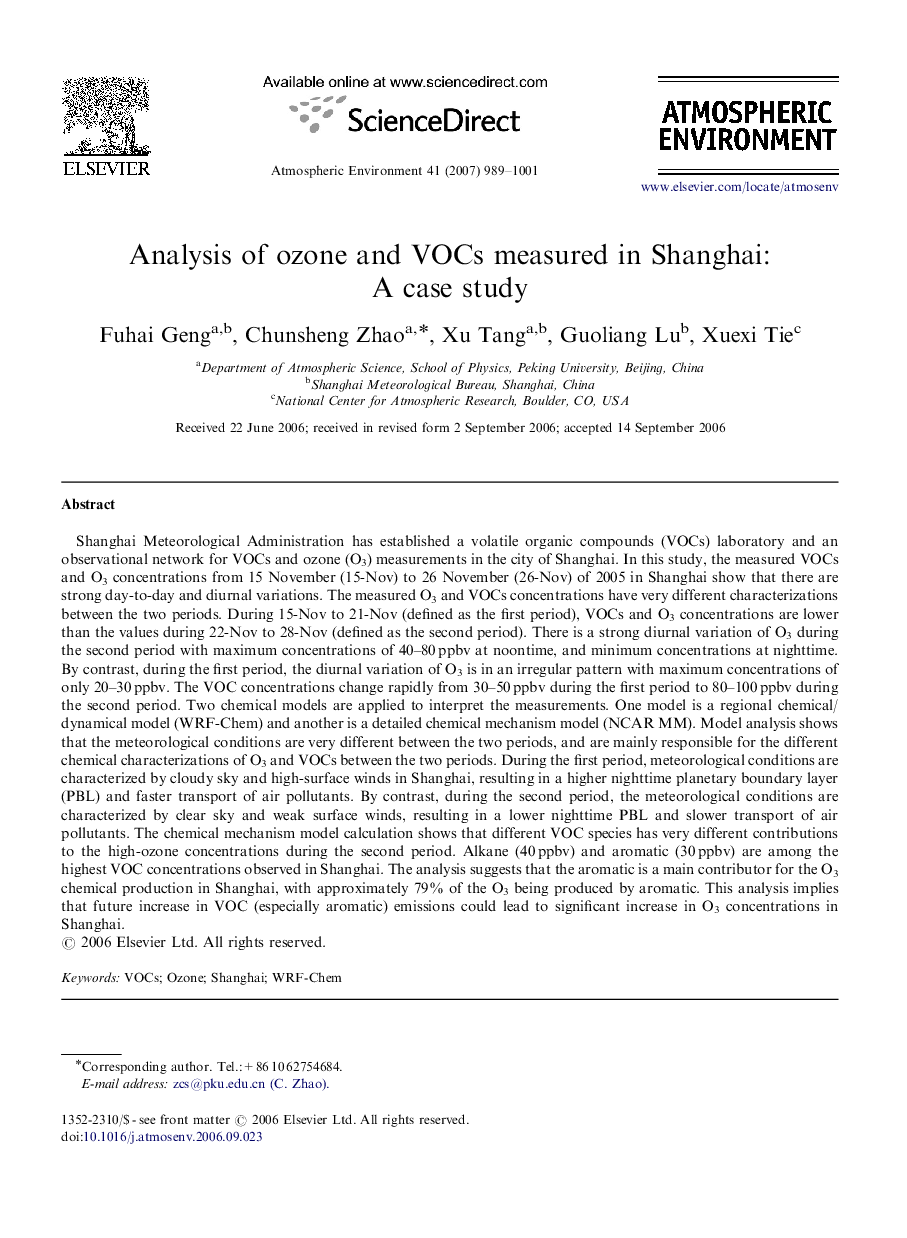| Article ID | Journal | Published Year | Pages | File Type |
|---|---|---|---|---|
| 4443074 | Atmospheric Environment | 2007 | 13 Pages |
Shanghai Meteorological Administration has established a volatile organic compounds (VOCs) laboratory and an observational network for VOCs and ozone (O3) measurements in the city of Shanghai. In this study, the measured VOCs and O3 concentrations from 15 November (15-Nov) to 26 November (26-Nov) of 2005 in Shanghai show that there are strong day-to-day and diurnal variations. The measured O3 and VOCs concentrations have very different characterizations between the two periods. During 15-Nov to 21-Nov (defined as the first period), VOCs and O3 concentrations are lower than the values during 22-Nov to 28-Nov (defined as the second period). There is a strong diurnal variation of O3 during the second period with maximum concentrations of 40–80 ppbv at noontime, and minimum concentrations at nighttime. By contrast, during the first period, the diurnal variation of O3 is in an irregular pattern with maximum concentrations of only 20–30 ppbv. The VOC concentrations change rapidly from 30–50 ppbv during the first period to 80–100 ppbv during the second period. Two chemical models are applied to interpret the measurements. One model is a regional chemical/dynamical model (WRF-Chem) and another is a detailed chemical mechanism model (NCAR MM). Model analysis shows that the meteorological conditions are very different between the two periods, and are mainly responsible for the different chemical characterizations of O3 and VOCs between the two periods. During the first period, meteorological conditions are characterized by cloudy sky and high-surface winds in Shanghai, resulting in a higher nighttime planetary boundary layer (PBL) and faster transport of air pollutants. By contrast, during the second period, the meteorological conditions are characterized by clear sky and weak surface winds, resulting in a lower nighttime PBL and slower transport of air pollutants. The chemical mechanism model calculation shows that different VOC species has very different contributions to the high-ozone concentrations during the second period. Alkane (40 ppbv) and aromatic (30 ppbv) are among the highest VOC concentrations observed in Shanghai. The analysis suggests that the aromatic is a main contributor for the O3 chemical production in Shanghai, with approximately 79% of the O3 being produced by aromatic. This analysis implies that future increase in VOC (especially aromatic) emissions could lead to significant increase in O3 concentrations in Shanghai.
